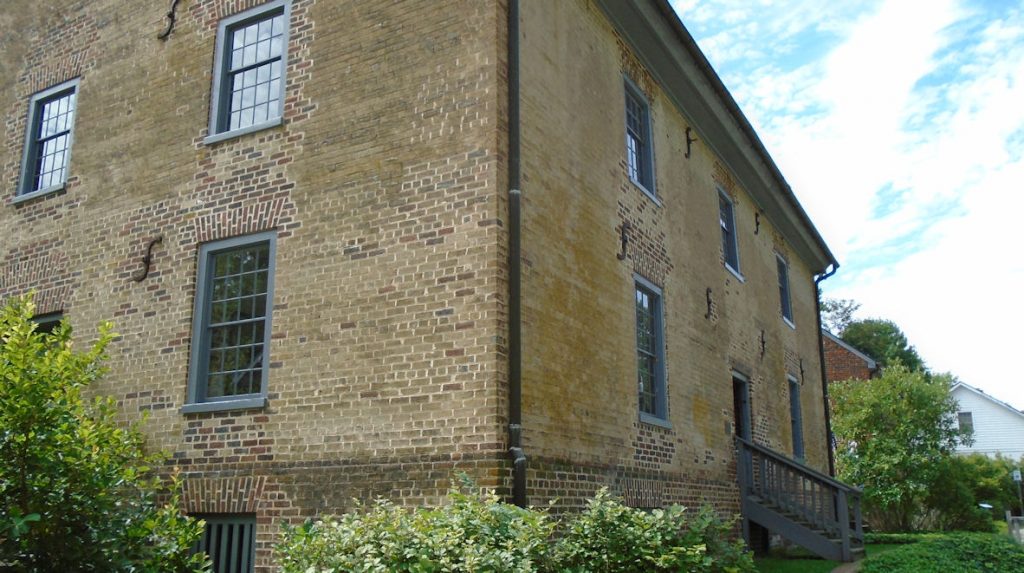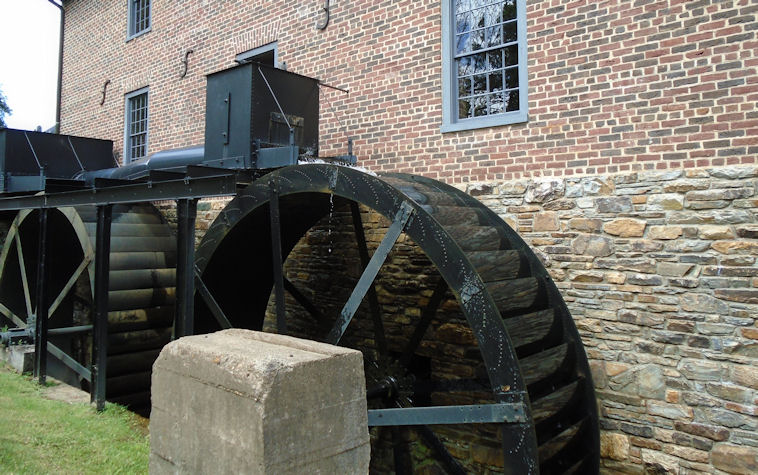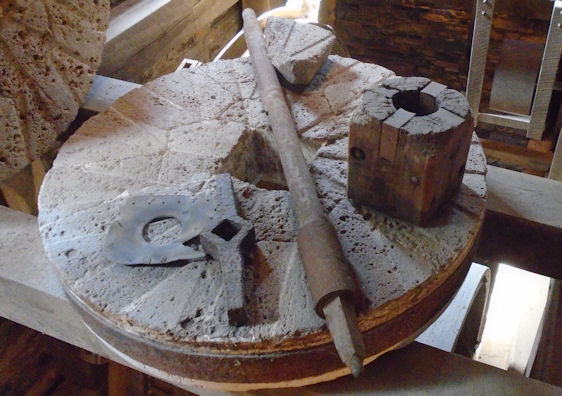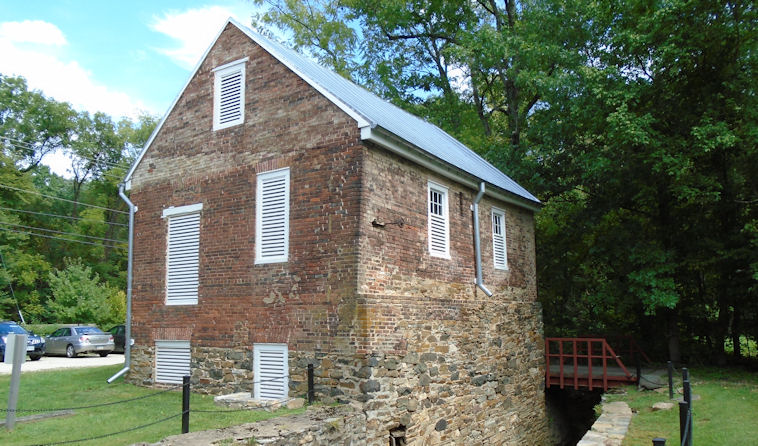
Alex is taking some classes in historical preservation & archeology at the NOVA community college. I have come truly to appreciate community colleges, especially NOVA. They provide well-targeted ways to prepare for specific careers. Alex was assigned to visit Adlie Mill, in Loudoun County. It is in the cute little village of Adlie, maintained in a historical style, very charming.

It was a working commercial mill until 1971. It is working still but now as a demonstration project. They grind corn and wheat to make flour and cracked corn that they feed to animals at their farm. This is one of the things I think is important about historical preservation, that they maintain the connections. A mill was not just a place they ground grain; it was integrated into a larger community. It is the connections that are interesting but they can be lost if we preserve only the isolate physical remains.

The first guy we met was an engineer volunteer who explained the mechanics of the water wheels & mill stones. The water wheel is an overshot wheel, which means that water is impounded by a dam to create a mill pond. The water is released over the top of the wheel and turned by gravity. Other wheels run by taping the current in rivers. They are undershot wheels. Overshot are usually more powerful, but require the greater investment in dams and ponds.

In the days before steam and gasoline engines – and a while later – industrial operations, like mills needed to be located near fast-flowing water.

The water wheel can turn millstones, saws or anything else that can be hooked up to its mechanical energy. At Adlie they had both, although only the grist mill remains.
We saw the mill stones. They were imported from France because the stone had a good reputation for being hard and durable. They shipped the stone in pieces and reassembled them on site. The stones had groves that cut the grain in a scissors fashion; they did not crush the grains. They adjusted the stones to make finer or courses grains. Adjustments were important: too far apart and no grinding, too close and the stones would bang together knocking pieces of stone into the mix or maybe worse, creating sparks that could set fires in the mills.
Putting in just the right amount of grain was crucial. Too much would clog the operations and cause it to “grind to a halt.” Not enough grain would cause the problems mentioned above. Speed of grinding was also a factor. Too fast would cause friction and fires. The miller used all his senses to get it right. Sound and sight are obvious. Smell was also important. The miller would “put his nose to the grindstone” to figure out if things were getting too hot.
They had some reenactors around this weekend. They specialize in people from the Federal period. One of them told me that there was a need for this. Lots of the physical remains around here were built during that time, but not many people reenact it. Revolutionary times are more popular and the Civil War is the king of hill. The Federalist period was a time of transition. It was early industrial transition and a time of rapid growth in the U.S. There are lots of style choices for reenactors. They can go with the clothes of the revolutionary period, more like the Civil War or various combinations. Transitions are like that.
Among the craftsmen was a guy making cigars. Tobacco was a big part of early American history, as was alcohol. This is something that maybe they need to add back into the historical reproduction, at least in the aspect of smells. Maybe a few farm animals too.
